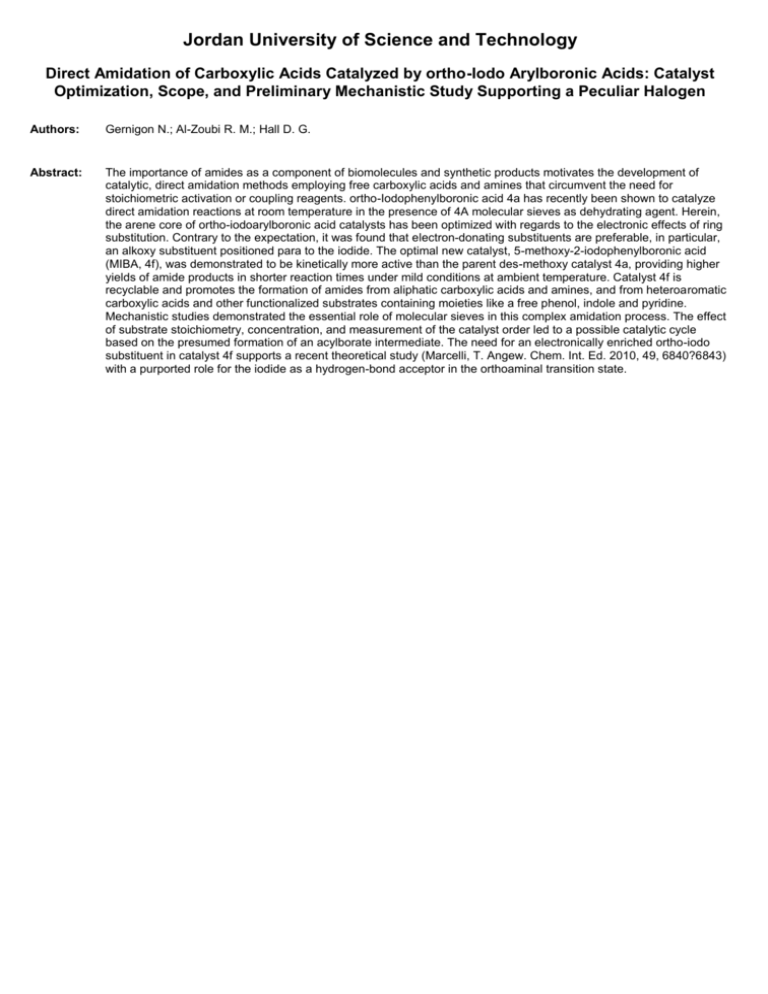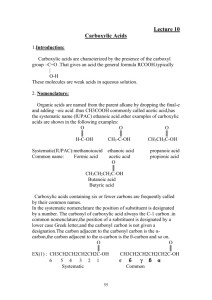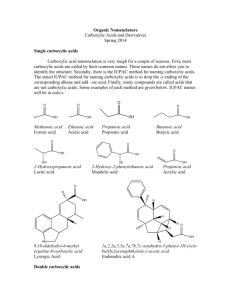Jordan University of Science and Technology
advertisement

Jordan University of Science and Technology Direct Amidation of Carboxylic Acids Catalyzed by ortho-Iodo Arylboronic Acids: Catalyst Optimization, Scope, and Preliminary Mechanistic Study Supporting a Peculiar Halogen Authors: Gernigon N.; Al-Zoubi R. M.; Hall D. G. Abstract: The importance of amides as a component of biomolecules and synthetic products motivates the development of catalytic, direct amidation methods employing free carboxylic acids and amines that circumvent the need for stoichiometric activation or coupling reagents. ortho-Iodophenylboronic acid 4a has recently been shown to catalyze direct amidation reactions at room temperature in the presence of 4A molecular sieves as dehydrating agent. Herein, the arene core of ortho-iodoarylboronic acid catalysts has been optimized with regards to the electronic effects of ring substitution. Contrary to the expectation, it was found that electron-donating substituents are preferable, in particular, an alkoxy substituent positioned para to the iodide. The optimal new catalyst, 5-methoxy-2-iodophenylboronic acid (MIBA, 4f), was demonstrated to be kinetically more active than the parent des-methoxy catalyst 4a, providing higher yields of amide products in shorter reaction times under mild conditions at ambient temperature. Catalyst 4f is recyclable and promotes the formation of amides from aliphatic carboxylic acids and amines, and from heteroaromatic carboxylic acids and other functionalized substrates containing moieties like a free phenol, indole and pyridine. Mechanistic studies demonstrated the essential role of molecular sieves in this complex amidation process. The effect of substrate stoichiometry, concentration, and measurement of the catalyst order led to a possible catalytic cycle based on the presumed formation of an acylborate intermediate. The need for an electronically enriched ortho-iodo substituent in catalyst 4f supports a recent theoretical study (Marcelli, T. Angew. Chem. Int. Ed. 2010, 49, 6840?6843) with a purported role for the iodide as a hydrogen-bond acceptor in the orthoaminal transition state.











